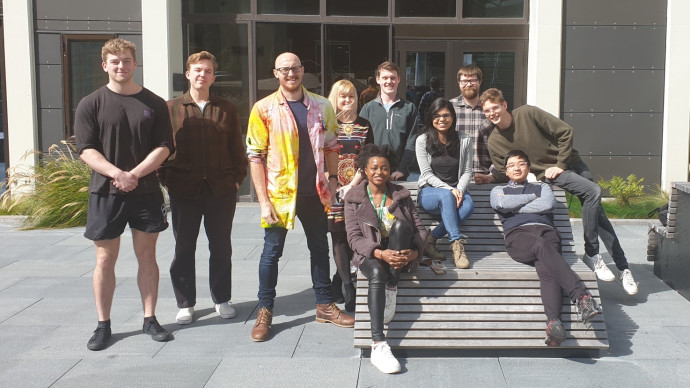Nathaniel Davis

2020: Dr Nathaniel Davis, Te Herenga Waka Victoria University of Wellington, has been awarded a Rutherford Discovery Fellowship for research titled ‘Pushing the limits on renewable energy technology through hybrid organic/inorganic nanomaterials’
Published 22 Whiringa-ā-nuku October 2020
Biography
Dr Nathaniel Davis is a Lecturer in the School of Chemical and Physical Sciences at Te Herenga Waka Victoria University of Wellington. Dr Davis has established a track record of international leadership in converging organic/inorganic synthesis and photophysics research of new materials and devices. After completing his PhD in physics at the University of Cambridge in 2017 as the Bragg Scholar, he spent an additional year there as an Oppenheimer Early Career Research Fellow. Dr Davis then moved to his current position and in 2019 became an Associate Investigator at both the MacDiarmid Institute for Advanced Materials and Nanotechnology and the Dodd Walls Centre for Photonic and Quantum Technologies. In 2019, he received a Marsden Fund Fast-Start grant, MBIE Endeavour Smart Ideas funding, and Science for Technical Innovation National Science Challenge funding to support his research.
Research summary
Dr Nathaniel Davis looking at some of his new solar materials. Photo: Supplied
Due to a heightened awareness of global climate change, there is increasing demand for affordable and sustainable sources of renewable energy. Aotearoa New Zealand has set a goal of net-zero carbon emissions by 2050. To achieve this ambitious goal, we must improve existing, and develop new, renewable-energy technologies.
During his Rutherford Discovery Fellowship, Dr Davis will combine his expertise in chemistry and physics to develop a new generation of technology for harnessing light energy, known as photoactive antenna complexes. These complexes contain light absorbing components arranged to harvest, direct and control the energy flow of light. These photoactive antenna complexes are not widely used at present, as they are chemically complicated to produce. Dr Davis will combine organic and inorganic materials to generate antenna complexes. Using comparatively simple procedures, he will fabricate nanostructures that funnel light energy in a similar manner to plants performing photosynthesis. Combining this with techniques to add or split units of light will allow for more efficient use of the wide spectrum of energy produced by the sun. Once developed, these next generation photoactive antenna complexes will have tremendous potential for use in a wide range of applications, including renewable-energy technologies.
